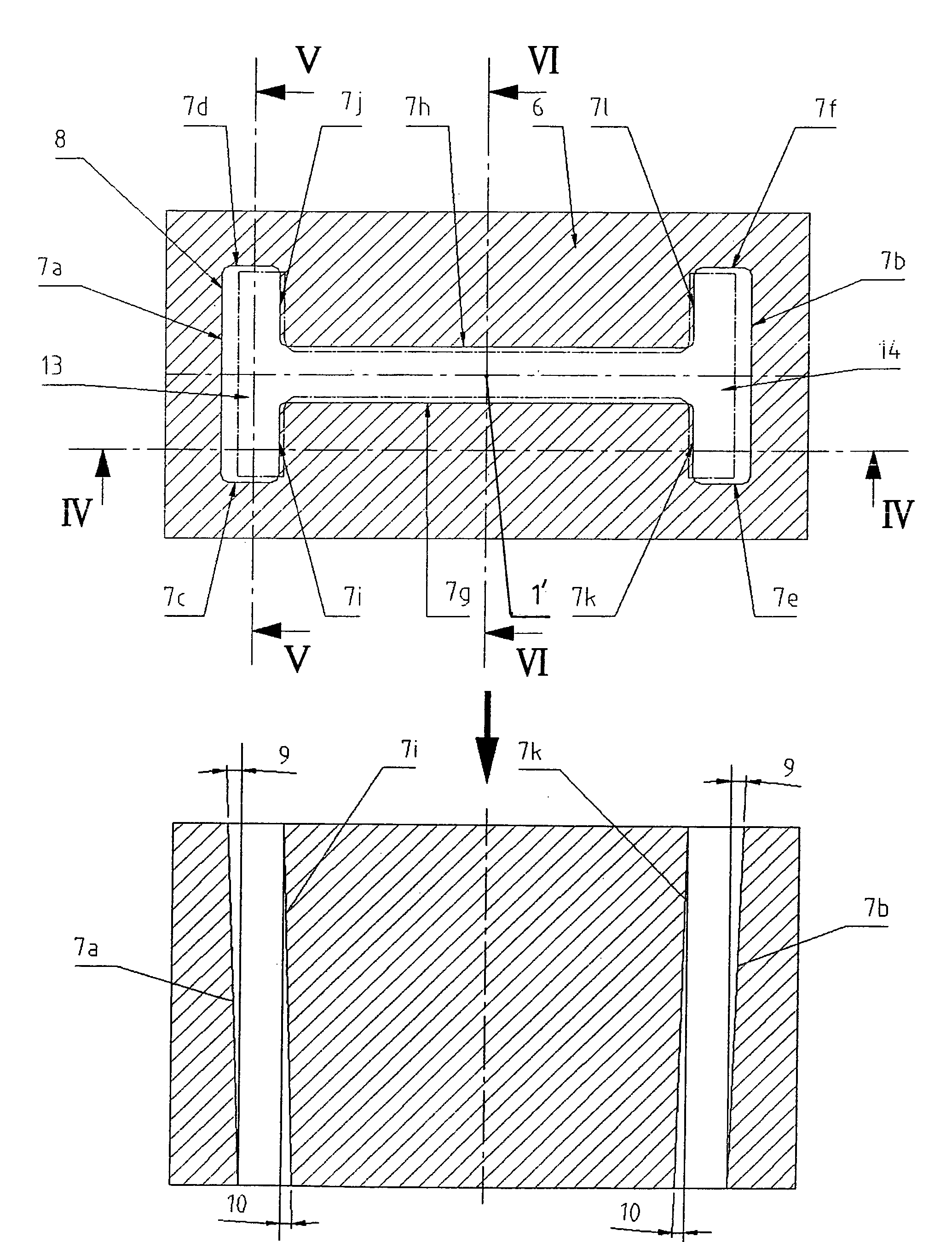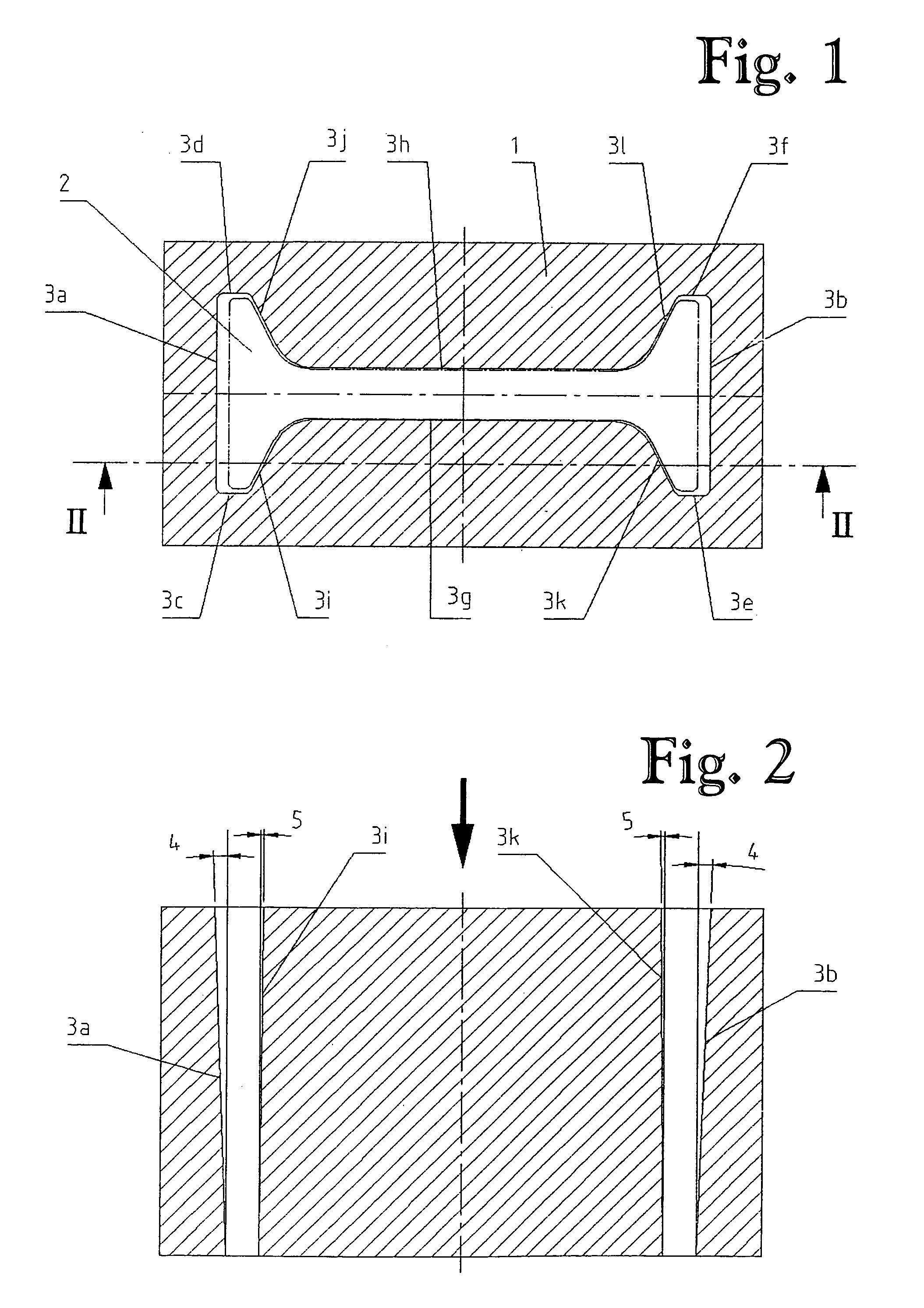Mold for the continuous casting of preliminary sections, in particular double T-shaped preliminary sections
- Summary
- Abstract
- Description
- Claims
- Application Information
AI Technical Summary
Benefits of technology
Problems solved by technology
Method used
Image
Examples
Embodiment Construction
[0015]The conventional mould 1 shown in FIG. 1 and FIG. 2 has a mould passage 2 with a double T-shaped cross-section corresponding to the cross-section of the section to be cast. The mould passage 2 is formed by the interior walls 3a to 3l. The latter are produced by means of a punch which is drawn as a female mould through a tubular blank. In FIG. 1 the lower end of the mould 1 is also indicated by a dashed line.
[0016]In order to compensate for the shrinkage of the cast strand that occurs during the solidification process, the interior walls 3a to 3f are produced with tapering 4. In contrast, the lateral interior walls 3i, 3j and 3k, 3l of this double T have tapering 5 because only in this way can the punch be extracted after the forming.
[0017]The mould 6 according to the invention of FIG. 3 to FIG. 6 essentially differs from the conventional mould 1 in that in the latter all of the interior walls 7a to 7l in the mould passage 8 respectively have tapering 9 to 12 extending from the...
PUM
| Property | Measurement | Unit |
|---|---|---|
| Shrinkage | aaaaa | aaaaa |
| Diameter | aaaaa | aaaaa |
| Shape | aaaaa | aaaaa |
Abstract
Description
Claims
Application Information
 Login to View More
Login to View More - R&D
- Intellectual Property
- Life Sciences
- Materials
- Tech Scout
- Unparalleled Data Quality
- Higher Quality Content
- 60% Fewer Hallucinations
Browse by: Latest US Patents, China's latest patents, Technical Efficacy Thesaurus, Application Domain, Technology Topic, Popular Technical Reports.
© 2025 PatSnap. All rights reserved.Legal|Privacy policy|Modern Slavery Act Transparency Statement|Sitemap|About US| Contact US: help@patsnap.com



